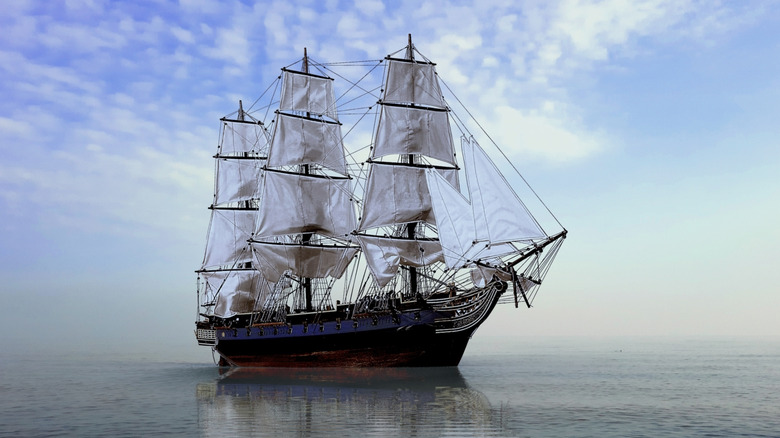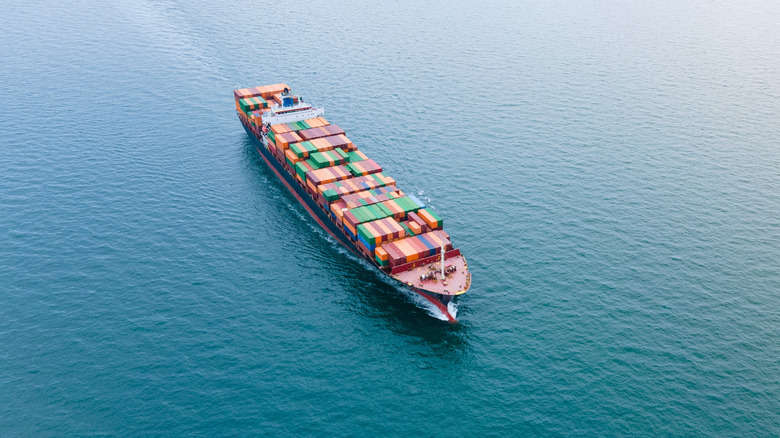Why Are The 2 Sides Of Ships Called Port And Starboard?
There are many terms that you hear on the deck of a ship that you will very rarely, if ever, hear in other contexts. People are not using the term hull, which means the body of a ship, in their everyday lives, despite it having other meanings, and you'll rarely hear "poop deck" on land. Most sections of a ship have odd names, such as port and starboard. These refer to the left and right sides of the ship, respectively, if you are facing the bow (or front) of the ship. You may wonder why they wouldn't just make things simpler and call these different sides the left and right side. Well, there is a practical reason as to why this isn't the case, and there is a long historical precedent for the port and starboard terms as well.
First and foremost, left and right seem like very definitive terms, but in the case of a ship, they are very vague. If you are facing the stern of the ship, the port side would be to your left and the starboard to your right. Left and right are relative terms depending on where you are positioned, but port and starboard can remain definite. This is akin to people in the theater using the terms stage left, stage right, upstage, and downstage when blocking a scene. From the audience's perspective, stage right is actually to their left. By using port and starboard, those on board will have no confusion about where certain things are located or where they need to be positioned. As for how those names came about, we need to look well into the past for that.
The origins of port and starboard
Getting to the port and starboard terms that we use today was not an overnight decision. These are terms that came about after decades, if not centuries, of seafaring and the evolution of the English language. The word starboard has its origins in Old English, at a time in history when people steered ships with oars and not motors. Most people are right-handed, so when they would steer a ship, the oar would typically be placed on the right side of the stern for people to best handle the steering. The Old English word for steer is stéor, while bord means the side of the boat. As English evolved, these words combined and morphed into starboard. Ironically, steering wheels being on the starboard side of most boats today isn't fully connected to this.
If you steer on the right side, then the left side of the ship is the one you load your passengers and cargo on. Long before it was called the port, it was known as the ladde-borde in Middle English, which means the loading side. As modern English arrived, this was changed to larboard, a word you have probably seen or heard in many novels and films about old ship warfare or pirates. The problem with this word is that saying starboard and larboard on a ship can be awfully confusing because the two words are so similar. Starting in the mid-1500s, people started commonly referring to it as the port because it was the one that faced the harbor, and in the mid-1800s, the U.S. Navy officially replaced the term larboard with port.

